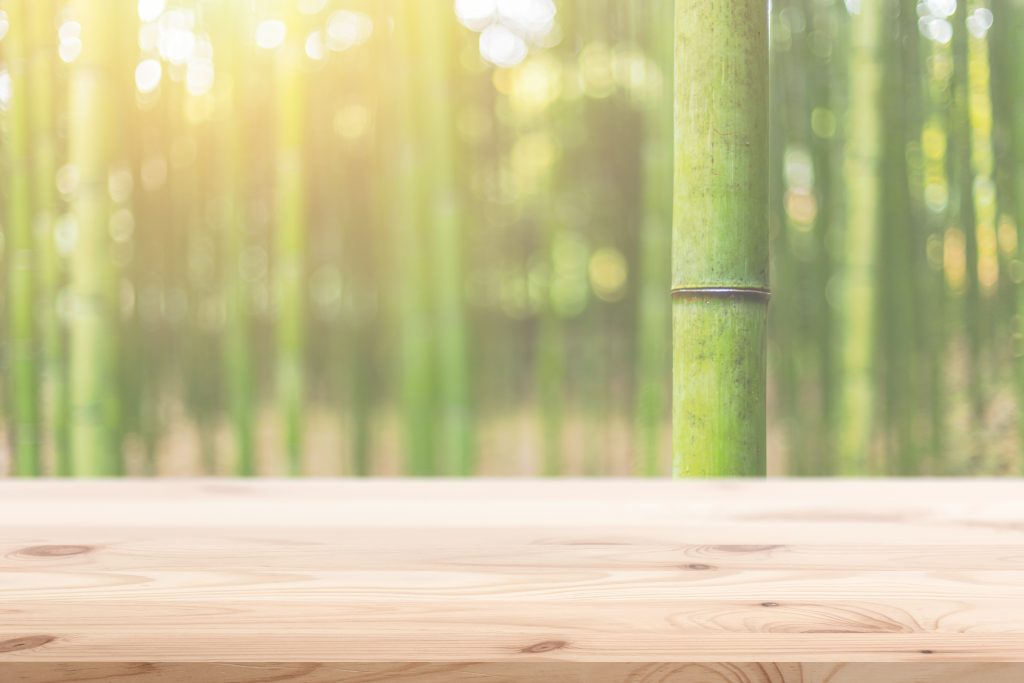Bamboo flooring is attractive, low-cost, and eco-friendly. It is the newest type of flooring available which combines the best qualities of hardwood and then some. The fact that it is natural and sustainable makes it appealing for eco-conscious homeowners, while its affordability appeals to people on a budget. Here are 4 things you didn’t know about the latest popular flooring choice.

It’s the world’s hardest floor
How? Looks can be deceiving. The simple bamboo plant grows quickly, but fast growth doesn’t tell us why bamboo flooring is so durable — just look at hardwood trees, which can take up to 100 years to fully mature. Because of its structure of cellulose and lignin in a dense outer layer and multiple segments, bamboo has a greater strength by weight than steel as well as greater tensile strength. Cellulose is plant fibre and lignin is a complex polymer. Both are insoluble and rigid, but lignin is more difficult to decompose than cellulose. The best species for building are Guadua Angustifolia (Guadua Bamboo) and Phyllostachys Edulis (Moso Bamboo).
There are different manufacturing methods
Not all bamboo flooring options are the same. What does this mean, exactly?
The two main types are traditional and carbonised bamboo. Both are listed as “wood” flooring options. However, when people talk about bamboo flooring being so durable, they are probably referring to carbonised bamboo. Not that uncarbonised bamboo is lacking — it’s as durable as red oak.
Traditional bamboo, also known as classic bamboo, can come in a vertical or horizontal style. The process of creating traditional bamboo flooring involves cutting the harvested bamboo into strips, sterilising them, and then curing them in drying ovens. Premium strips get stacked in layers and glued before being pressed into planks. It may or may not be pre-finished for wear resistance. It typically comes in light straw yellow or blonde shades and retains its natural texture and grain.
Carbonised or strand-woven bamboo undergoes a process in which heated strips of bamboo are separated into strands, woven together, and then compressed with high-pressure heat and resins. The heat treatment causes it to become darker with a variety of shades, which remain consistent throughout and allows for sanding and refinishing. Weaving reinforces it for strength and results in a flooring that is several times harder than traditional hardwoods. While it has more flexibility for colours and textures to fit different types of decor and hides scratches well, it is more expensive than traditional bamboo.
Bamboo flooring trends follow hardwood
Bamboo might as well be hardwood 2.0, although it’s technically a grass, because the latest trends for bamboo flooring tend to follow those of hardwood. While it looks exotic with simple beauty on its own, homeowners who wish to achieve different effects can mimic many hardwood textures such as distressing, parquet, white, grey and wide planks. Bamboo still has a recognisable look of elegance, which makes it perfect for modern decor.
It’s great for high-traffic buildings
Asia popularised bamboo with its durability for flooring and doors. It can withstand the compression of furniture and feet. It can also resist stains and spills and it’s incredibly easy to clean; you only need hardwood cleaner or wood soap. You won’t see many people who only have bamboo flooring in one room, either. They tend to have it through the whole house because it can suit any decor style, making it versatile for any sized abode. All of these qualities make it pet, child and foot-traffic friendly enough for family and commercial spaces alike.
No longer just a trend, bamboo flooring is like hardwood but better. It can be manufactured in various ways and made to mimic hardwood while being cost-effective and retaining its uniqueness. The fast-growing grass is sustainable, durable and adaptable. If you’re looking to replace your flooring, consider bamboo.
To learn more about our flooring options, contact us.
